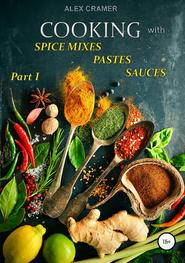
Полная версия:
Cooking with spice mixes, pastes and sauces
Although many seasonings and spices can last for years if properly stored, I do not recommend storing them for longer than one year. For such a long time, flavor and aroma most probably will weather, the spices will fade and will not be able to enrich the dish with flavour you would expect. I update my collection of spices twice a year: in the fall and in the spring. It is necessary to do this to supply your shelf with new fragrant spices that will reward you with delicious culinary dishes. And yet I want to emphasize that spices do not spoil for many, many years and they do not cause harm to health, but the value of such spices, regarding its taste and aroma, would be totally useless.
Do not store spices near stove or under direct sunlight. Seasonings and spices should be stored a cool, dry and dark place. Keep that in mind. Keep all your spices at a temperature not exceeding 68 ⁰F (20 °С).
By no means pour the spices into a frying pan or cooking pot from the container in which spices are stored. Steam from the pan will penetrate into the container and worsen the spices quality. Use a dry spoon to scoop up the desired amount of spices.
Make a habit of adding individual spices or their blends several times during the cooking process. Depending on the dish, you need to add the mixture at the very beginning of cooking so that the spices are mixed with oil and with enrich the main components of the future dish. Then add the mixture in the middle of the cooking process. And then you should raise the dish to taste on the last stage of cooking. Accustom yourself to tasting your future fine cuisine over and over. This habit will help you check and evaluate the taste balance of your dish.
BRIEF OVERVIEW OF SPICES AND HERBS
Spices can be added as a separate part to the dish as well as an ingredient to the whole mixture, which will play fragrant and flavor compositions along with other ingredients.
Each individual spice modifies the mixture and adds new hints of flavors and aromas. Just one spice can alter the whole mix beyond recognition adding a new color to it and thus diversify your favorite dish.
Hereafter I will briefly describe the 35 most popular herbs and species that are commonly used in blends. You surely are familiar with each of them but you also might find out completely new ones. Having learned different kinds of spices you can buy it and easily prepare favourite mixture from this book or create your own unique combination for your favorite dish.
In addition to a brief overview, you will find out which spice goes together with other and which products it is blended with.
After reading chapter, you will learn the basics of spice blending art and creating seasoning mixes. You will familiarize yourself with dosing and creating your own unique blends for meat or vegetables, for salads or desserts, for shish kebab or grilling, chicken, fish and seafood.
This does not necessarily mean that one particular spice cannot be combined with something else: this is an approximate and simplified list. But it will help you to combine seasonings and spices with one another and create successful, fancy, balanced and aromatic combinations.
ALLSPICE
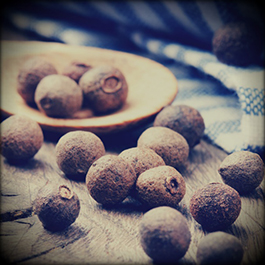
It is also known as Jamaican pepper or pimento pepper. This Central America native has flavors and aromas of cinnamon, nutmeg, cloves and black pepper all in one single spice. An incomparable warm and, at the same time, spicy stream of flavors and aromas explain its name. The spice is quite strong, it gives the dishes powerful aroma and changes their taste. Therefore, you should use it carefully. Despite this, it is very slow in giving its flavor to liquid dishes, therefore, it should be added in the beginning of cooking process. Allspice is an integral part of such mixes as baharat and berbere. Also, it is used in various spicy combinations in Jamaican and Caribbean cuisine.
Allspice pairing:
Fruits and vegetables: pineapple, eggplant, peas green, pear, zucchini, cabbage (including sauerkraut), potatoes, carrots, bell pepper, peach, tomato, turnip, beetroot, currant, pumpkin, apple.
Protein product: lamb, beef (stewed, boiled, fried), game (especially quail, rabbit), legumes (peas, buckwheat, rice oats, pearl barley, chickpeas), goat meat, sausages, seafood, nuts, poultry (chicken, turkey), fish (especially fried; herring marinated), pork, eggs.
Other foods: pastry, mushrooms, lemon juice, honey, beverages, biscuits, pies, soups and broths, dough, minced meat and meatballs, fruit compotes and jams, chocolate.
Seasonings and spices: cloves, mustard, ginger, cardamom, coriander, cinnamon, bay leaf, onion, marjoram, nutmeg, black pepper, chili, rosemary, thyme, caraway, garlic.
Cuisines and dishes: English cuisine, Middle Eastern cuisine, curry dishes, Indian cuisine, Caribbean cuisine, Mexican cuisine, North American cuisine, Mediterranean cuisine, Jamaican cuisine.
ANISE
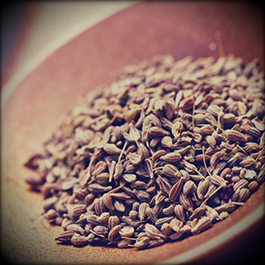
Anise seeds give the dish warm sweet and fruity accents. To open up its aroma, it is recommended to warm up seeds in a dry frying pan and crush it into powder after that. Anise is perfect for fish, seafood and poultry when paired with dill, fennel and coriander. It brightens flavor of stew, especially beef stew. Anise is the spice that balances sour sumac in syrian za'atar and makes up unsweetened taste in ras-el-hanout. Anise in some rare cases is able to replace fennel. It is added in the early stages of cooking process.
Anise pairing:
Fruits and vegetables: apricot, pineapple, watermelon, pomegranate, pear, melon, cabbage (including cauliflower and sauerkraut), potatoes, strawberries, cranberries, root vegetables, carrots, parsnips, peaches, rhubarb, turnips, beets, plums, pumpkin, citrus, apple.
Protein product: beef, wild game, legumes (especially beans, lentils, rice), seafood (especially crabs, mussels), nuts (almonds, hazelnuts, walnuts), poultry (especially chicken, duck), fish, pork, cheeses (especially goat cheese, ricotta), eggs.
Other foods: baked food and pastry, raisins, vegetable oil (olive oil), butter, honey, beverages (tea), sugar, lemon juice, pickles and marinades, soups and stews (especially fish), dough, dates, bread.
Seasonings and spices: star anise, basil, vanilla, cloves, cumin, ginger, cardamom, cilantro, coriander, cinnamon, sesame, turmeric, nutmeg, mint, fenugreek, allspice, black pepper, chili, celery, caraway, dill, fennel, garlic.
Cuisines and dishes: Middle Eastern cuisine, German cuisine, Greece cuisine, South American cuisine, Vietnamese cuisine, Indian cuisine, Chinese cuisine, Moroccan cuisine, Portuguese cuisine, Egypt cuisine, Scandinavian cuisine, sauce mole, Mediterranean cuisine, French cuisine.
BASIL
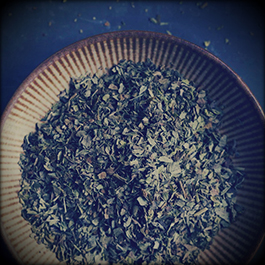
Basil is one of the most commonly used herbs in the culinary world. Its flavour can be described as a mixture of peppery anise with a peculiar astringency of mint, slightly bitter with a sweetish hint, and its aroma is spicy-sweet, with notes of anise and cloves. In most western cuisines basil is an integrated part of many sauces, especially of tomato sauces. Using it as a single spice you should add it in very end of cooking, as the flavour of basil fades away quickly during long heat treatment.
Basil pairings:
Fruits and vegetables: apricot, pineapple, watermelon, eggplant, broccoli, blueberries, green onions, zucchini, potatoes, corn, leafy vegetables, raspberries, carrots, cucumbers, olives, bell pepper, peach, tomato, beetroot, pumpkin, citrus, chives, spinach.
Protein product: lamb, beef and veal, wild game (especially rabbit), legumes (especially beans, rice, peas, wheat), coconut milk, seafood (especially crabs, mussels, scallops, shrimps), nuts (especially pine nut), poultry (especially chicken, duck), fish (especially salmon, sea bass, tuna), pork, by-products (especially liver), cheeses (especially goa cheese, ricotta, mozzarella, feta, parmesan, pecorino), eggs.
Other foods: mushrooms, vegetable oil (including olive oil), butter, honey, ice cream, drinks, soy sauce, juice (lemon, lime), tomato sauces, vinegar, bread, chocolate (including white chocolate).
Seasonings and spices: vanilla, cloves, mustard, ginger, cilantro, coriander, cinnamon, onion, marjoram, mint, oregano, black and white pepper, chili, parsley, rosemary, thyme, fennel, savory, garlic, tarragon.
Cuisines and dishes: Italian cuisine, Pan-Asian cuisine (especially Thai), pastas and various kinds of sauces, pesto, pizza, Mediterranean cuisine, French cuisine.
BAY LEAF


This particular spice gives a unique aroma (sweet, tart, balsamic, with notes of nutmeg) to many broths, soups and sauces, especially tomato ones. Bay leaf contains a balanced flavour of bitterness that is admired by many chefs. Each dish requires individual dosage of this spice, but without doubt it should always be added moderately. Bay leaf is very similar to allspice as both of the spices require a long time to give their flavor. This is why bay leaf is better to be added in a very beginning of cooking process. Marinated vegetables, fruits and mushrooms are hard to imagine without this aromatic leaf. This spice is added to some spice blends, however, it brought the greatest fame to a bouquet of garnish. On the top photo – Turkish bay leaf, on the bottom – Californian.
Bay leaf pairing:
Fruits and vegetables: artichoke, cabbage (including cauliflower), potatoes, strawberries, corn, carrots, cucumbers, tomato, beets, pumpkin, citrus, apple.
Protein product: lamb, beef and veal, wild game (including venison, feathered game: quail, partridge), legumes (peas, beans, rice, lentils), sausages, seafood (especially crab, oysters, shrimp), poultry (chicken, duck, turkey), fish (especially salmon, tuna), pork, cheese.
Other foods: mushrooms, desserts, custard, juice (lemon), soups and broths, tomato sauces, stews, vinegar.
Seasonings and spices: basil, vanilla, cloves, onion, marjoram, oregano, paprika, allspice, black pepper, chili, parsley, rosemary, celery, thyme, fennel, savory, garlic, sage.
Cuisines and dishes: Moroccan cuisine, mole sauces, polenta, Mediterranean cuisine, Turkish cuisine, French cuisine.
BLACK PEPPER
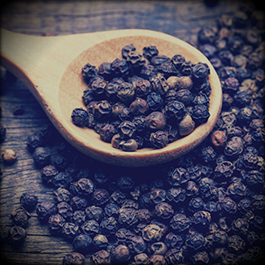
We think we know all about this spice as it can be found in every kitchen in various corners of our planet. Unfortunately, this spice is faked up quite often. The real and quality black pepper is really expensive. Black pepper has a warm tart aroma and flavour. Without the slightest doubt, you should buy only whole peppercorns and grind it before seasoning the dish.This spice is universal and it is easier to list those spice mixes that do not contain this pepper rather that list those that this spice supplements. Freshly ground black pepper is added in the very last minutes of cooking process.
White pepper. This kind of pepper is derived by removing its outer shell. In simple phrase, white pepper is a black pepper that was removed from its shell. Its flavor is less spicy while its aroma is stronger that of black pepper. It well harmonizes with meat, fish (especially white), cloves, ginger, nutmeg, potatoes, various pastas and sauces.
Green pepper. These green peppercorns are unripe berries of black pepper. It has a piquant fresh aroma and pleasant pungency. It goes well when added in sauces, marinades, pickles and sausages. It harmonizes well with various kinds of vegetables, bay leaf, avocado, beef and veal, butter, poultry (chicken, duck, turkey), wild game (especially venison), garlic, mustard, parsley, pork, sage, various kinds of salads (as dressing seasoning ), fish (especially salmon), seafood (especially prawns).
Pink pepper. Unlike black, white and green peppers, pink pepper in fact is not even a pepper. However, it is worth mentioning. Its unique feature is the balance of spicy and sweet. The aroma is fruity, with pine notes, remotely resembling juniper berries. Having a piquant taste, pink pepper has proven itself with delicate products such as fish, seafood, poultry, pork, venison and other wild game. Crushed pink pepper goes as a powder for desserts, for example, ice cream.
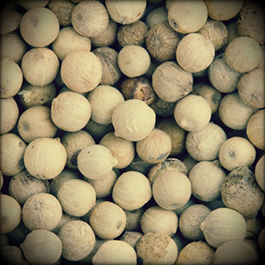
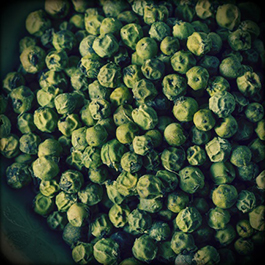
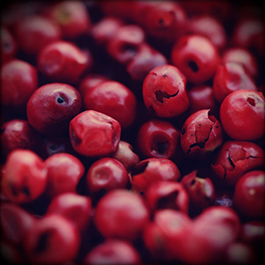
Black pepper pairing:
Black pepper pairs and harmonizes with virtually all vegetables, fruits and protein products.
Seasonings and spices: basil, cloves, cumin, ginger, cardamom, coriander, cinnamon, turmeric, marjoram, nutmeg, oregano, fenugreek, paprika, allspice, chili, parsley, rosemary, thyme, caraway, fennel, savory, garlic, sage.
CARAWAY
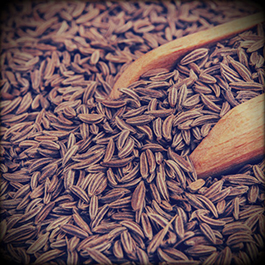
Caraway is one of the oldest spices in the world and it plays a significant part in many mixes. It is the caraway that easily binds all the other spices to each other. It has a bitter but warm spicy taste that combines the aromas of dill and anise with piquant nutty note.
There is a common confusion between caraway and cumin, and therefore in many foreign culinary books caraway is often called cumin. That’s it, both of the spices are called cumin. You can avoid this misunderstanding by comparing the taste of both spices. You need to buy caraway seeds and cumin seeds and scrunch first the caraway seed, and then cumin seed. You will then realize that caraway seeds are spicier than cumin seeds. Cumin, on the other hand, is more delicate with much brighter aroma.
Caraway helps to ease an immoderate intension of particular spice. Caraway is one of the main components in such mixtures as ras-el-hanout and harissa. This spice is usually added in the later stages of cooking process.
Caraway pairing:
Fruits and vegetables: cabbage (including sauerkraut), potatoes, carrots, cucumbers, tomato, turnips, beets, apple.
Protein product: beef, legumes (wheat, rice), yoghurt, kefir, sausages, seafood, poultry (chicken, duck), fish, pork (including bacon), sour cream, cheeses, cottage cheese, eggs.
Other foods: mushrooms, desserts, lemon juice, pasta (including spaghetti and noodles), honey, beverages, biscuits, various kinds of marinades, vegetable oil (olive), butter, soups and stews, dough, vinegar, bread.
Seasonings and spices: cloves, mustard, cumin, cardamom, coriander, cinnamon, turmeric, onion, nutmeg, oregano, paprika, black pepper, chili, parsley, celery, thyme, dill, fennel, garlic, juniper berries.
Cuisines and dishes: Austrian cuisine, British cuisine, Hungarian cuisine, Eastern European cuisine, goulash, Moroccan cuisine, German cuisine, cabbage salads.
CARDAMOM
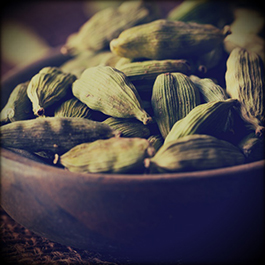
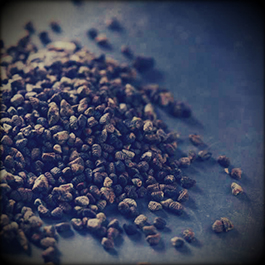
Cardamom has a strong, but soft warm and sweet flavor and aroma with delicate citrus and floral notes complementing the refreshing hint of eucalyptus. Being one of the most popular spices in Indian cuisine, and in other world cuisines, cardamom provides aromatization of many dishes. And of course, it is widely used in various mixtures of spices. Cardamom is an important element in curry, garam masala, berbere, ras-el-hanout, baharat and many others. Cardamom is added in the early stages of cooking process. One pod of cardamom contains an average of 15-20 seeds. On the top photo there are pods with green cardamom, on the bottom photo there are cardamom seeds.
Cardamom pairing:
Fruits and vegetables: apricot, pineapple, banana, grapes/raisins, cherry, pear, zucchini, potatoes and other root vegetables, bell pepper, peach, tomato, radish, plum, currant, pumpkin, date, citrus, apple.
Protein product: all types of meat (beef, lamb, pork, chicken stew, roast duck), legumes (wheat, rice, peas, beans, lentils, chickpeas), yoghurt, milk, nuts (pistachios, walnuts), fish (especially grilled), cream, cheese, cottage cheese, eggs.
Other foods: custard, gingerbread, sweets, honey, ice cream, drinks (especially coffee, tea, wine), biscuits, cakes, sugar, juice and zest (lemon, lime, orange), dough, bread and pastries, chocolate.
Seasonings and spices: anise, star anise, vanilla, cloves, cumin, ginger, coriander, cinnamon, turmeric, bay leaf, nutmeg, mint, paprika, allspice, black pepper, chili, caraway, fennel, saffron.
Cuisines and dishes: Asian cuisine (Indian, Indonesian), North African cuisine (including Moroccan), Scandinavian cuisine.
CELERY
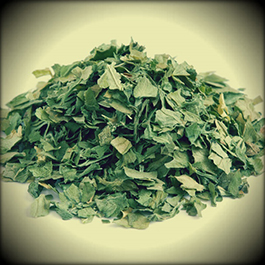
It is often used as supplement for soups and salads. In terms of its gustatory quality and nutrient level it is the most valuable vegetable crop. Its leaves contain ascorbic acid, carotene, vitamins and even antiulcer substances. As a spice, dried leaves and seeds are used. A stalk of celery is used while fresh. Dried celery retains its flavour and has a specific pleasant herbaceous aroma, reminding of parsley, and has a piquant warm, slightly bitter flavor. Celery seeds are often used in spicy combinations for barbecue and roasted meat.
Celery pairing:
Fruits and vegetables: green onions, cabbage, potatoes, carrots, cucumbers, tomato, turnips, beets, chives.
Protein product: beef, legumes (beans, rice, hummus/chickpeas), seafood (including oysters), nuts (especially peanuts), poultry (especially chicken, turkey), fish, pork, cheeses (especially blue, parmesan, feta, goat cheese, cream cheese), eggs.
Other foods: broths (especially chicken, vegetable), mushrooms (especially wild, black truffles), various kinds of minced meat, vegetable oil (olive, peanut), butter, soy sauce, juice (lemon, tomato), vinegar.
Seasonings and spices: basil, cloves, mustard, cumin, ginger, cilantro, turmeric, bay leaf, onion, paprika, black and white pepper, parsley, thyme, dill, garlic, tarragon.
Cuisines and dishes: curry dishes, stir-fry dishes, mirepoix (European vegetable mix for soups and broths).
CILANTRO (CORIANDER GREENS)
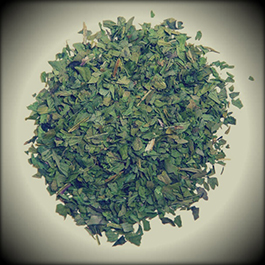
In appearance, cilantro is similar to parsley leaves, and sometimes it is even called "Chinese parsley", but the flavour and aroma of these two herbs are completely different. Interesting fact regarding its flavor – there are two types of people: those who adore this useful and aromatic herb, and those who dislike it comparing the taste of cilantro with soap. Nevertheless, this spice has quite delicate and at the same time a complex taste resembling of a mixture of mint, lemon and pepper. Fresh cilantro leaves are popular throughout Asia and Latin America where they are added to all kinds of curry dishes, curry pastes, sauces, including chutney and salsa. Dried cilantro is great for adding to a dish in a very last minutes of cooking process.
Cilantro Pairing:
Fruits and vegetables: avocado, eggplant, green onions, potatoes, corn, lemongrass, lettuce, carrots, cucumbers, bell pepper, tomato, citrus, chives.
Protein product: lamb, beef, game, legumes (beans, lentils, rice, tamarind), yoghurt, seafood, nuts (including coconut), poultry (chicken, duck, turkey), fish (especially white: cod, halibut), pork, cheese, eggs.
Конец ознакомительного фрагмента.
Текст предоставлен ООО «ЛитРес».
Прочитайте эту книгу целиком, купив полную легальную версию на ЛитРес.
Безопасно оплатить книгу можно банковской картой Visa, MasterCard, Maestro, со счета мобильного телефона, с платежного терминала, в салоне МТС или Связной, через PayPal, WebMoney, Яндекс.Деньги, QIWI Кошелек, бонусными картами или другим удобным Вам способом.
Вы ознакомились с фрагментом книги.
Для бесплатного чтения открыта только часть текста.
Приобретайте полный текст книги у нашего партнера:
Полная версия книги
Всего 10 форматов



